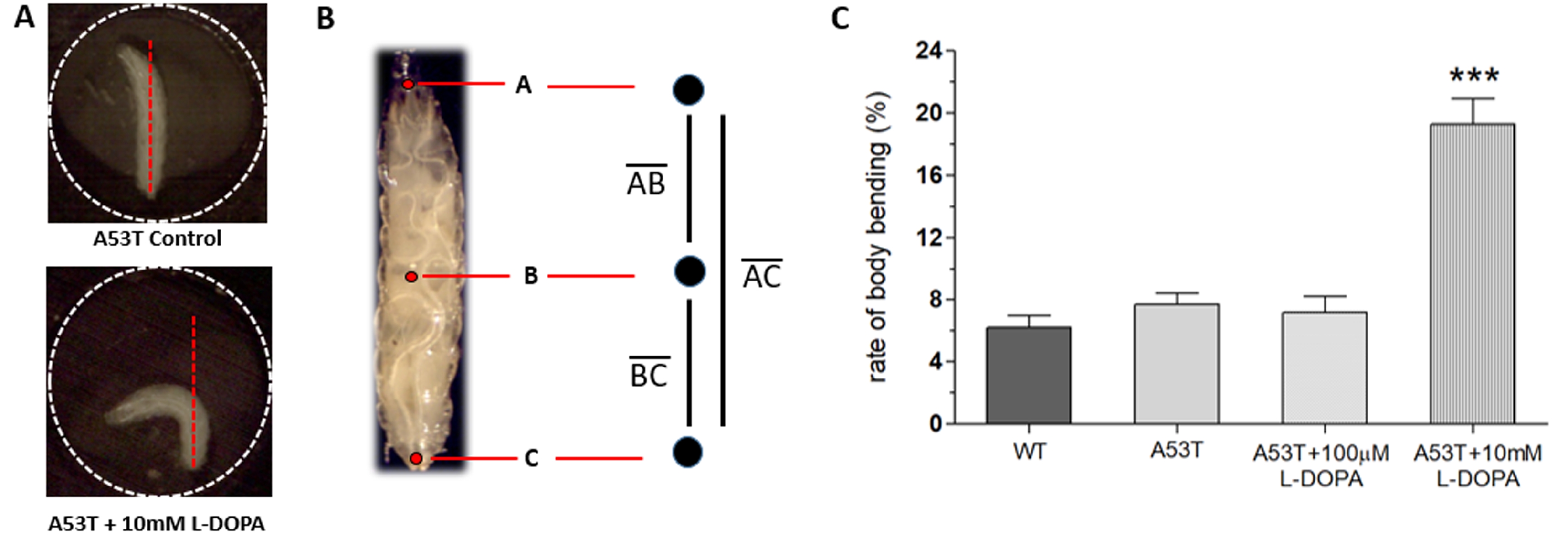
Fig. 2. L-DOPA-induced dyskinesia in A53T Drosophila larvae. (A) Example snapshots of body bending behavior (BBB) in A53T Drosophila larvae treated with high concentration of L-DOPA (A53T+10 mM L-DOPA) or without L-DOPA (A53T Control). A larva was kept in a well (2 mm diameter) to limit free-crawling and thus enable us to analyze body bending behavior (BBB). A well is delineated with a dotted circle. (B) Three points were selected at the head, midpoint, and tail of the larva on every frame in the sub-stack, creating a three point skeleton which can be used to quantify BBB (see Materials and Methods). (C) Larvae exposed to a high concentration (10 mM) of L-DOPA display a higher body bending percentage, but A53T larvae with low concentration of L-DOPA (A53T+100 µM) or without L-DOPA (A53T Control) did not show changes in BBB, demonstrating dyskinetic behaviors in a genetic PD model exposed to high concentration of L-DOPA. Student t-test, ***p<0.001. For each group, 27~32 larvae from 8 separate experiments were examined.
© Exp Neurobiol


